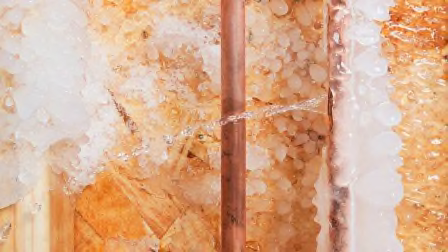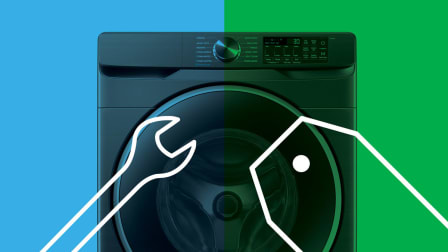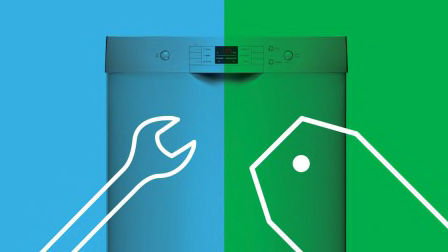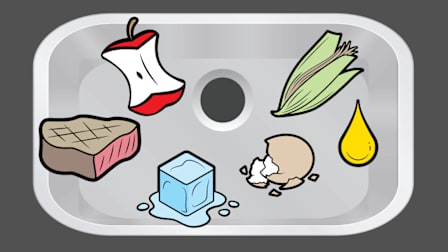What's the Best Way to Clean High Windows?
You can do it effectively with both feet on the ground

You look up at your house one day and see that your upstairs windows are badly in need of cleaning. But they’re not the type that tilt in for an easy wipe from the inside. What do you do?
One of the most effective ways to clean the outside of high windows is to use a telescoping pole that can attach to cleaning heads such as brushes, sponges, and squeegees. These allow you to clean high windows from the ground—and it’s much safer to use a pole than to stand on a ladder, says David Trezza, who tests outdoor power equipment for CR.
You can buy a telescoping cleaning pole and attachable cleaning heads in a kit. Kits that can reach a second floor typically start around $100 at home improvement stores. Water-fed systems that attach to a garden hose start at about $140.
Check Surroundings First
Before you begin cleaning, check to make sure your pole won’t touch any electrical wiring. Also, use binoculars to make sure the window panes and frames are intact and won’t rain down loose pieces on you. While you’re looking, check for putty that needs to be replaced, necessary paint repairs, and cracks in the glass.
Make sure the area under the window where you’ll be working is clear of brush, stones, holes, or other impediments that could trip you up. Extend the pole to a window to test whether you can manage it; if it’s too unwieldy, err on the side of safety and contact a professional window cleaner instead. Skylights, which are angled upward, may be hard to access even with an extended pole.
Use Proper Technique
If you know the window brand, check the manufacturer’s website for cleaning instructions before you begin. In Consumer Reports’ past window tests, we made a surprising discovery that it’s easy to stain some brands of windows if you use the wrong cleaner. Ammonia-based formulas, including some Windex products, can cause streaks or film on windows.
Consider Other Options
You can also use a pressure washer to clean out-of-reach windows, Trezza says, but you’ll need to be careful to avoid damage. "It can be a little bit hard to control," he says. Some pressure washers let you adjust the pressure, which may make controlling the flow easier. Precautions to take include setting the washer on the lowest psi available, using a wide spray nozzle, and spraying the windows at an angle rather than head-on. And always make sure the windows are tightly closed to avoid getting water inside.
You also could try a magnetic window cleaner, which lets you clean both sides of a window pane from inside your house. The device works by using strong magnets to pull the cleaning heads on either side of the glass together so that they move in sync. Prices for most models start at about $45. Professional window cleaners we contacted, though, were split on their efficacy.
"They’re not that effective, and the magnet is too strong, to the point it can actually damage the glass," says Steve Evans, owner of Memphis Maids, a house cleaning service based in that Tennessee city.
"For windows that are difficult to reach or don’t open all the way, these are the best option," counters James King, operations manager at Deluxemaid, a home cleaning company based in Indianapolis. "Keep in mind to wipe slowly, or else the magnetic components could easily separate," he says. "Also attach a string so that if it falls off, you don’t have to go all the way downstairs to retrieve it."
Wait for a Cloudy Day
Regardless of the method you use, wash your windows on a cloudy day. Direct sunlight can leave streaks on your windows because the liquid evaporates quickly and leaves residue behind, says Steven Ip, owner of the Cleanzen Cleaning Service in Boston.
Seek Easy-to-Clean New Windows
If you’re looking to buy replacement windows, consider designs that are easy to clean. Most new double-hung windows allow you to tilt the sashes in for easy cleaning. Casement-style windows, hinged on one side, allow good ventilation and easy cleaning when fully open.
Check our replacement window ratings and buying guide for reviews of double-hung windows made of wood, vinyl, and composite materials as well as shopping advice.
Editor’s Note: A version of this article also appeared in the September 2023 issue of Consumer Reports magazine.




















